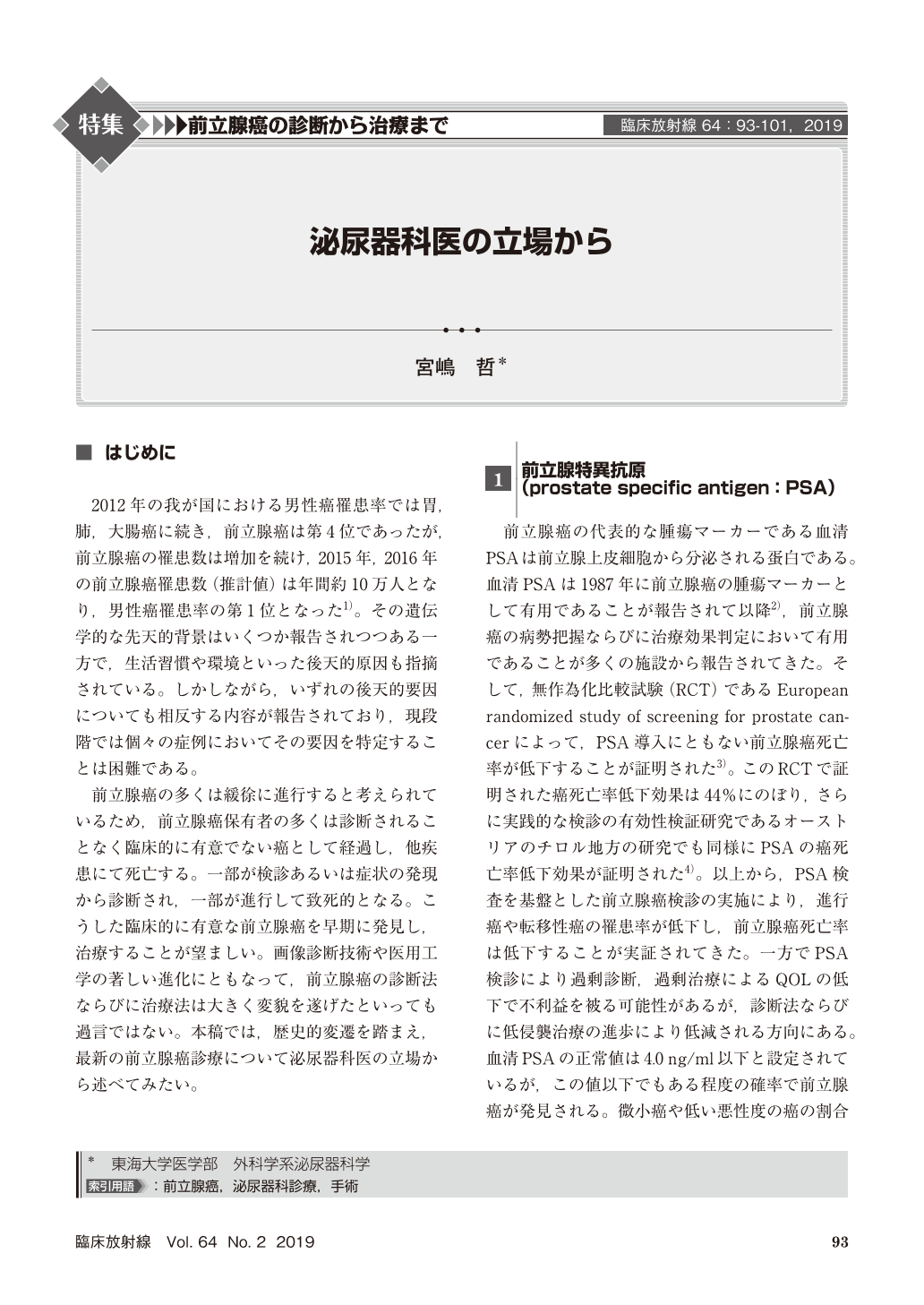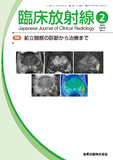Japanese
English
- 有料閲覧
- Abstract 文献概要
- 1ページ目 Look Inside
- 参考文献 Reference
2012年の我が国における男性癌罹患率では胃,肺,大腸癌に続き,前立腺癌は第4位であったが,前立腺癌の罹患数は増加を続け,2015年,2016年の前立腺癌罹患数(推計値)は年間約10万人となり,男性癌罹患率の第1位となった1)。その遺伝学的な先天的背景はいくつか報告されつつある一方で,生活習慣や環境といった後天的原因も指摘されている。しかしながら,いずれの後天的要因についても相反する内容が報告されており,現段階では個々の症例においてその要因を特定することは困難である。
In the present course of the increasing prevalence of prostate cancer in our country, it is desirable that radiologists understand the diagnosis and treatment for prostate cancer. Prostate needle biopsy for the cases showing serum prostate-specific antigen(PSA)concentration of higher than 4.0 ng/ml or an upward trend in PSA leads to pathological diagnosis. However, it has been reported that the accuracy of the diagnostic rate was significantly improved following confirmation of local existence of cancer cells by prostatic magnetic resonance imaging(MRI)before biopsy. Especially, MRI-ultrasound fusion-guided prostate biopsy has been shown to have a more accurate diagnostic rate compared to conventional needle biopsy. After pathological confirmation, the clinical stage is radiologically diagnosed using abdominal computed tomography, bone scintigraphy, or MRI.
In case of localized prostate cancer, treatment options include surgery, radiation therapy, or medical treatment. Surgery or radiation therapy is commonly chosen for low-intermediate risk prostate cancer in men aged 75 years or lesser. In patients older than 75 years of age, brachytherapy or intensity-modulated radiation therapy is preferable. Conversely, in high-risk prostate cancer, multimodal therapy, including surgery, radiation, or androgen deprivation therapy, is recommended. Even though medical treatment is considered as the first-choice treatment for metastatic diseases, recently, cytoreductive surgery is being performed for locally advanced high-risk prostate cancer, even with oligometastasis. Medical treatments involve a diversity of drugs, including anti-cancer and androgen receptor-targeted agents. In such situations, effective modality is required to accurately reflect the disease state. Herein, recent trends in prostate cancer management will be presented.

Copyright © 2019, KANEHARA SHUPPAN Co.LTD. All rights reserved.


